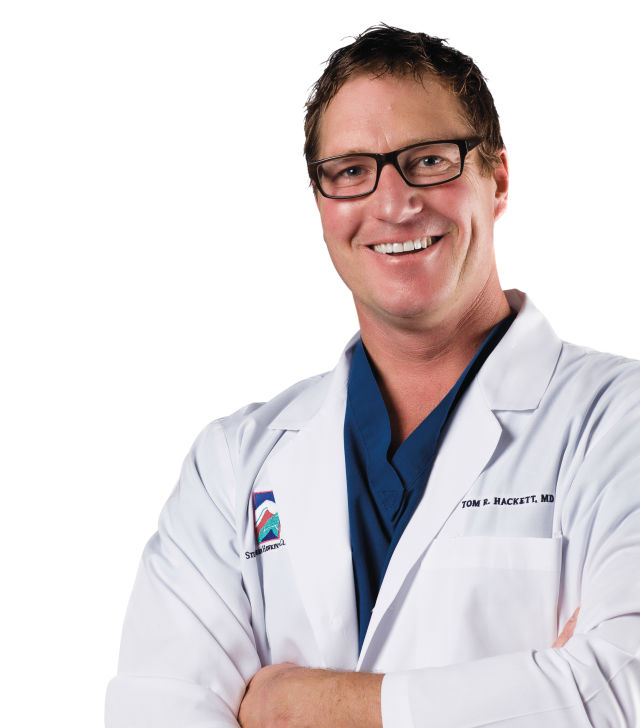ACL TLC

Image: Jack Affleck
Nobody wants to hear that dreaded “pop!” or miss a powder day or even an entire ski season because of chronic knee pain. But skiers and snowboarders who find themselves on the ouch end of a scalpel couldn’t ask for a better repairman than Vail’s own Dr. Tom Hackett.
An avid mountaineer, former ski patrol director, and extreme sports addict (not to mention “Dr. October” in the 2013 Most Beautiful Doctors in America calendar), Hackett has firsthand knowledge of body mechanics from his own experience. Past escapades range from elaborate tricks in the half-pipe to swimming the English Channel, a feat he undertook last August in choppy water, suffering from seasickness at the outset but clocking in from coast to coast in just under thirteen hours.
Plus, as head physician for the US Snowboard Team, he speaks the language. “I think it’s helpful just knowing the vocabulary,” Hackett says. “If a patient says, ‘My knee gets tweaky when I do a backside 12,’ I can imagine the mechanics of it. I ski and snowboard—not at World Cup level, but at a really high level. Knowing what that athlete has to do, I relate to it personally.”
An orthopaedic surgeon specializing in shoulders and knees at the Steadman Clinic, Hackett also regularly ministers to the US Ski Team, the US Rafting Team, the Colorado Rockies, and a myriad of other pro athletes. Although he has a rich history of fixing the body parts of high-profile human machines, he works with the rest of us, too.
“The skills that are developed to take care of elite-level athletes are the same skills that go into the weekend warrior, the person doing spring triathlons,” he says. “The tricks we have at Steadman are the same ones we use for everyone we treat.”
It’s no surprise that knee injuries—particularly ACL tears—are the most common among skiers. While having strong, well-conditioned leg muscles and quick reflexes can help prevent such mishaps, their prevalence has as much to do with equipment as it does with operator error, Hackett explains. The most common problem is bindings that don’t release easily when skis are twisted in a crash or in variable snow.
“A lot of it is making sure your DIN settings are properly set,” Hackett says. “It’s not like the old days where you can throw your own bindings on. These days, the equipment is a lot more complex and needs to be adjusted carefully.”
What may be a surprise is that among high-level snowboarders, ACL tears are also the most common injury. “Beginners or intermediate riders hurt their hands or wrists, but elite-level riders hurt their knees,” Hackett reports. “I see a ton of ACL injuries from all over the world.” While the cause of these knee ligament tears isn’t yet fully clear, Hackett’s preliminary research, sponsored by Red Bull, points to bad landings in the park or the pipe as a probable culprit.
“It’s almost always the front leg and from a deceleration injury,” he says. “Landing from a pipe, hitting rotten snow ... usually a landing issue.”
Whatever the source, it’s an issue Hackett understands as well as perhaps any other surgeon. And one that will ultimately be resolved on his operating table.






































